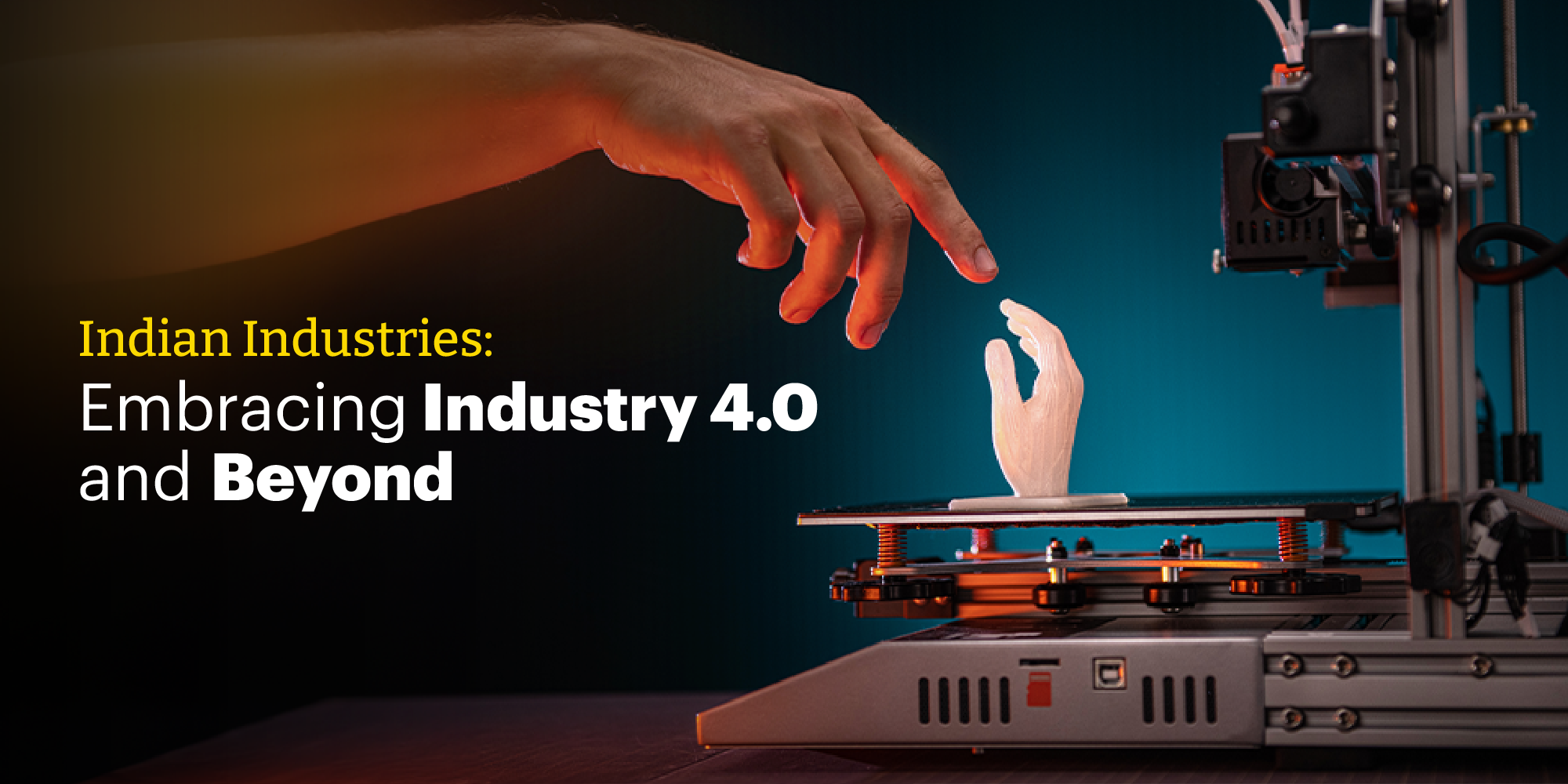Introduction
India, a powerhouse in various industries, is rapidly embracing the transformative wave of Industry 4.0.
This global trend, characterized by the integration of advanced technologies into manufacturing
processes, is revolutionizing traditional factories and paving the way for a more connected and
intelligent future. In this blog, we will explore how Indian industries are embracing Industry 4.0 and also
touch upon the concept of Industry 5.0.
Industry 4.0: Transforming Indian Manufacturing
Automation and Robotics: With the adoption of automation and robotics, Indian factories are witnessing
significant improvements in productivity, efficiency, and quality. Automated systems are streamlining
assembly lines, reducing human error, and allowing for round-the-clock production. This technology is
particularly valuable in labor-intensive industries, such as automotive manufacturing and electronics.
Internet of Things (IoT): The IoT has found its way into Indian industries, enabling the interconnection of
machines, devices, and systems. Real-time data collection and analysis help optimize operations,
enhance predictive maintenance, and minimize downtime. IoT integration is revolutionizing supply chain
management, enabling companies to monitor inventory levels, track shipments, and optimize logistics.
Big Data and Analytics: Indian industries are leveraging big data and analytics to extract valuable
insights from the vast amounts of data generated. Analyzing production data helps identify bottlenecks,
optimize processes, and improve overall efficiency. Data-driven decision-making enables companies to
respond swiftly to market demands, identify trends, and develop targeted strategies.
Artificial Intelligence (AI): AI technologies, such as machine learning and cognitive computing, are
empowering Indian industries to automate complex tasks and make intelligent decisions. AI-powered
systems can analyze patterns, detect anomalies, and predict maintenance requirements. This
transformative technology is driving innovation, enhancing product development, and enabling
personalized customer experiences.
India’s Factories: Embracing Industry 4.0 and Looking Towards Industry 5.0
While Industry 4.0 is already making waves in Indian industries, there is growing anticipation for the
next wave, Industry 5.0. Industry 5.0 aims to combine the efficiency of automation with the unique
problem-solving abilities of humans. It envisions a future where humans and machines work
collaboratively, each leveraging their strengths.
Collaborative Robotics: Industry 5.0 emphasizes the use of collaborative robots, or cobots, that can
work alongside humans in factory environments. These robots are designed to assist humans in tasks
that require precision, strength, or repetitive actions, freeing up human workers to focus on more
creative and complex aspects of production.
Human-Machine Interaction: Industry 5.0 places a strong emphasis on human-machine interaction,
enabling workers to communicate with machines intuitively. Advanced user interfaces, such as
augmented reality (AR) and virtual reality (VR), provide immersive experiences and simplify complex
operations. Workers can receive real-time guidance, training, and assistance, enhancing their skills and
productivity.
Conclusion
The Indian industries are undergoing a significant transformation as they embrace the principles of
Industry 4.0. Automation, IoT, big data, and AI are revolutionizing manufacturing processes, leading to
increased productivity, efficiency, and competitiveness. Moreover, the concept of Industry 5.0 is on the
horizon, promising a future where humans and machines collaborate harmoniously to drive innovation
and problem-solving.
As India’s factories continue their journey towards Industry 4.0 and beyond, it is essential for businesses
to invest in technological advancements, upskill their workforce, and foster a culture of innovation. By
embracing the power of Industry 4.0 and exploring the possibilities of Industry 5.0, Indian industries are
poised to make remarkable strides towards a digitally empowered future.
